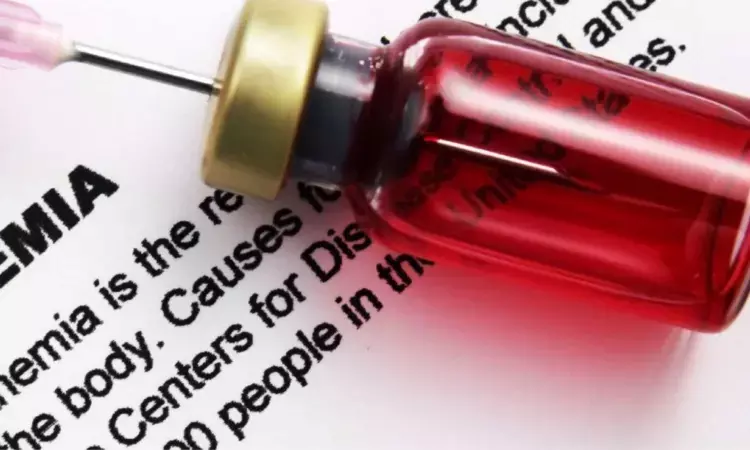- Home
- Medical news & Guidelines
- Anesthesiology
- Cardiology and CTVS
- Critical Care
- Dentistry
- Dermatology
- Diabetes and Endocrinology
- ENT
- Gastroenterology
- Medicine
- Nephrology
- Neurology
- Obstretics-Gynaecology
- Oncology
- Ophthalmology
- Orthopaedics
- Pediatrics-Neonatology
- Psychiatry
- Pulmonology
- Radiology
- Surgery
- Urology
- Laboratory Medicine
- Diet
- Nursing
- Paramedical
- Physiotherapy
- Health news
- Fact Check
- Bone Health Fact Check
- Brain Health Fact Check
- Cancer Related Fact Check
- Child Care Fact Check
- Dental and oral health fact check
- Diabetes and metabolic health fact check
- Diet and Nutrition Fact Check
- Eye and ENT Care Fact Check
- Fitness fact check
- Gut health fact check
- Heart health fact check
- Kidney health fact check
- Medical education fact check
- Men's health fact check
- Respiratory fact check
- Skin and hair care fact check
- Vaccine and Immunization fact check
- Women's health fact check
- AYUSH
- State News
- Andaman and Nicobar Islands
- Andhra Pradesh
- Arunachal Pradesh
- Assam
- Bihar
- Chandigarh
- Chattisgarh
- Dadra and Nagar Haveli
- Daman and Diu
- Delhi
- Goa
- Gujarat
- Haryana
- Himachal Pradesh
- Jammu & Kashmir
- Jharkhand
- Karnataka
- Kerala
- Ladakh
- Lakshadweep
- Madhya Pradesh
- Maharashtra
- Manipur
- Meghalaya
- Mizoram
- Nagaland
- Odisha
- Puducherry
- Punjab
- Rajasthan
- Sikkim
- Tamil Nadu
- Telangana
- Tripura
- Uttar Pradesh
- Uttrakhand
- West Bengal
- Medical Education
- Industry
Laboratory diagnosis of iron deficiency in adults and children: BSH Guideline

UK: The British Society for Haematology (BSH) has released an updated guideline on the laboratory diagnosis of iron deficiency in adults (excluding pregnancy) and children. The guideline appears in the British Journal of Haematology.
As iron homeostasis is dynamic, the laboratory diagnosis of iron deficiency is difficult. No single test can provide an accurate assessment of iron absorption, transport, storage, and utilization.
"The different assays available to assess iron and its stores will each be discussed, and recommendations made pertinent to practice within the UK. Iron metabolism in children and adults can be considered equivalent and these recommendations are applicable to both pediatric and adult practice," the authors wrote.
Hemoglobin concentration and red cell parameters (HcT, MCV, MCH, MCHC, RDW)
- If thalassaemia is not present, then any of MCV, MCHC or MCH below the normal range could suggest iron deficiency.
- Normal red cell indices do not exclude iron deficiency as a cause of anaemia, so further investigation may still be required if there is a high level of clinical suspicion.
Advanced red cell indices
- Mean reticulocyte Hb content of <29 pg can support the diagnosis of iron deficiency if initial tests are inconclusive.
Blood cell morphology
- Inspection of a peripheral blood film should be performed in cases of diagnostic uncertainty.
Serum ferritin
- Serum ferritin of <12 μg/l in children aged < 5 years and <15 μg/l in those aged > 5 years is indicative of iron deficiency.
- Serum ferritin within the laboratory reference range cannot exclude iron deficiency in the context of raised inflammatory markers or a history of acute or chronic disease, so further investigation may be warranted.
Iron studies: serum iron, total iron binding capacity (TIBC) and transferrin saturation (TSAT)
- Serum iron studies should not be used in assessment of iron deficiency other than to calculate the TSAT.
- SAT of <16% can support the diagnosis of iron deficiency if initial tests are inconclusive.
Soluble transferrin receptor (sTfR)
- The sTfR assay is not recommended for investigating iron deficiency.
Zinc protoporphyrin (ZPP)
- Measurement of ZPP is not recommended for the diagnosis of iron deficiency.
Hepcidin
- Measurement of hepcidin is not currently recommended for investigating iron deficiency.
"We expect the evidence base for use of other tests such as hepcidin to evolve over the next few years allowing further development of this algorithm," the researchers concldued.
Reference:
"Guideline for the laboratory diagnosis of iron deficiency in adults (excluding pregnancy) and children," is published in the British Journal of Haematology.
DOI: https://onlinelibrary.wiley.com/doi/10.1111/bjh.17900
Dr Kamal Kant Kohli-MBBS, DTCD- a chest specialist with more than 30 years of practice and a flair for writing clinical articles, Dr Kamal Kant Kohli joined Medical Dialogues as a Chief Editor of Medical News. Besides writing articles, as an editor, he proofreads and verifies all the medical content published on Medical Dialogues including those coming from journals, studies,medical conferences,guidelines etc. Email: drkohli@medicaldialogues.in. Contact no. 011-43720751


